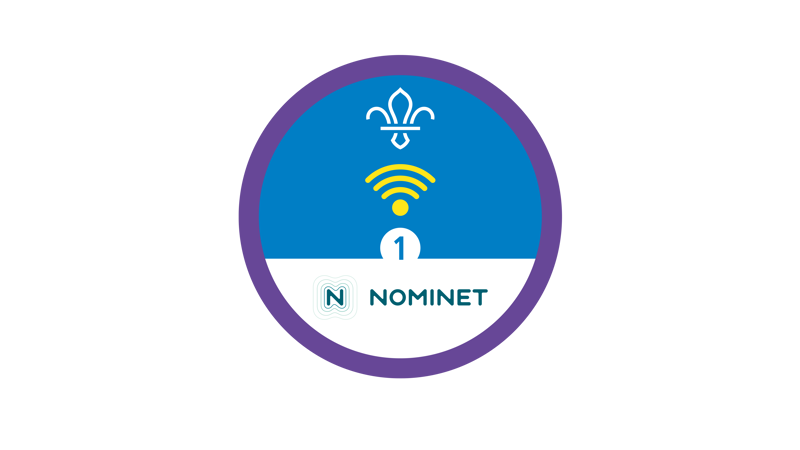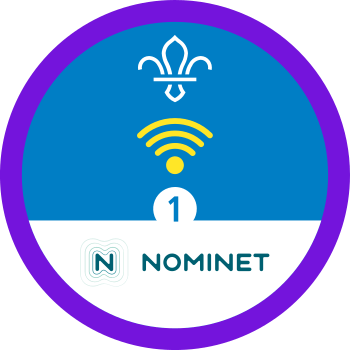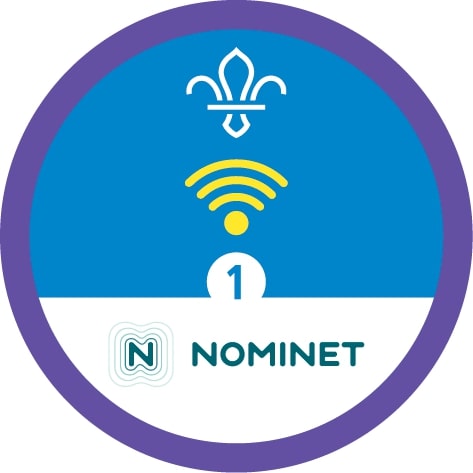
Joined up thinking
You’ll need
- Devices with access to the internet
Before you begin
- Everyone’s going to use an online tool to work together on a project. Before the session, the person leading the activity should decide on the project everyone could contribute to. This could be planning for a camp or a day out, planning a charity event or a social media campaign for some of the other requirements of the Digital Citizen Staged Activity Badge.
- Everyone should get confident using the chosen collaborative tool by checking out some online tutorials. The person leading the activity should encourage them to support each other in their learning. Anyone who’s familiar and confident with using the particular tool should help others to become confident in using it.
- The person leading the activity should remind everyone that some tools have chat or private messaging functions, but even online they should avoid being in a 1:1 setting.
- If you’re working towards Stage 4 of the Digital Citizen Staged Activity Badge you’ll need to make sure your team includes people from other parts of the country, or the world. There are lots of ways to get in touch with Scouts in other countries. There’s guidance on the Scouts website.
Everyone should decide on the best tool for the project and consider the pros and cons of each tool. Some site’s terms say you have to be over 13 to use it, so it’s only suitable for Explorer Scouts. If a young person is concerned about anything they see online, they must speak to a trusted adult.
The person leading the activity could set up stations with the different tools so groups could try out each one and make some notes of the different pros and cons of each. For example:
- Google Docs is a simple text-based tool, others can contribute comments and ideas to a document.
- Asana is also text-based, organizing projects with different lists, timelines and boards.
- Padlet lets someone start a project, creating boards, documents and web pages that are easy to read and contribute to.
Get ready to plan
- Everyone should talk about the project that needs to be planned and ask people to volunteer for different tasks. For example, if planning a camp one group might plan shopping and cooking, another could plan games and activities, and another could plan the equipment list.
- Split into groups and brainstorm together. Everyone should record their ideas straight to devices or jot them on paper ready to upload. People could even take some photos to add to the project plans.
- Everyone can do some online or offline research, using time in the session to check camp equipment or sort out resources for a charity event, depending on your project.
Joined up thinking
- Groups should upload their contributions to the online tool so that everyone can see them.
- Groups can add photos, links to other documents or websites and links to social media accounts (not their own personal ones).
- The person leading the activity should encourage groups to read, look at and think about every group member’s contributions and to make any adjustments to their own ideas so that the project feels like a group effort.
- Everyone should keep adding to the project until it’s ready to launch. This could be the day of camp or the event. Cross off tasks when they’re completed and keep the project to hand so everyone can check its progress.
Reflection
This activity gave responsibility to people in the group and enabled everyone to take a role in a project. Everyone should talk together about the pros and cons of working solely online. Pros may include having all the information in one place, allowing everyone to contribute and being available for everyone to see. Cons may include having to sift through too much information, only being able to contribute online (although you can add to and work with some collaborative tools offline) or having to become familiar with a new tool. The person leading the activity should ask everyone if they felt that they had ownership of the project rather than being led by someone – (this may also have pros and cons!) Ask everyone to reflect on their own role and contribution and what they might do differently next time.
Safety
All activities must be safely managed. You must complete a thorough risk assessment and take appropriate steps to reduce risk. Use the safety checklist to help you plan and risk assess your activity. Always get approval for the activity, and have suitable supervision and an InTouch process.
- Online safety
Supervise young people when they’re online and give them advice about staying safe. Take a look at our online safety or bullying guidance. The NSPCC offers more advice and guidance, too. If you want to know more about specific social networks and games, Childnet has information and safety tips for apps. You can also report anything that’s worried you online to the Child Exploitation and Online Protection Command. As always, if you’ve got concerns about a young person’s welfare, including their online experiences, follow the Yellow Card to make a report.
- If people aren’t used to using collaborative tools, start with a simple document and ask everyone to contribute comments. This could be an article about something they’d done before or poems or prayers. Once everyone’s confident contributing, try out a visual tool like Padlet.
- Some site’s terms say you have to be over 13 to use it, so it’s only suitable for Explorer Scouts. If a young person is concerned about anything they see online, they must speak to a trusted adult.
Make sure everyone has the opportunity to learn how to use the online tools at their own pace. Depending on access to internet devices, decide if this project will be done wholly or partly at home or all together.
All Scout activities should be inclusive and accessible.
If people are planning a long-term project everyone can take this skill home and continue to help to plan the project. Everyone should decide together if the planning will be done during a session together or at home between meetings. Everyone could also plan offline at home and then contribute to the collaborative tool during meeting time or vice versa.
Those confident using a collaborative tool could help plan a set of future meetings. The person leading the activity could set up a basic framework and ask everyone else to research and add games, craft ideas and links.
Everyone should be encouraged to lead the project as much as possible. They can decide on a platform, the tasks and teaching each other. They can also be in charge of setting and sending reminders for tasks.

